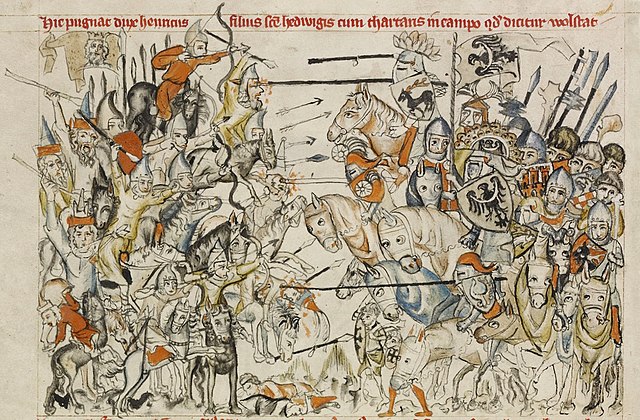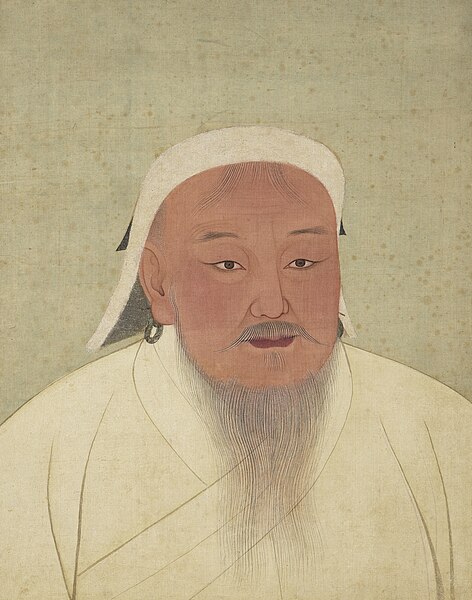The Battle of Legnica, also known as the Battle of Liegnitz or Battle of Wahlstatt, was fought between the Mongol Empire and combined European forces that took place at the village of Legnickie Pole (Wahlstatt), approximately 10 kilometres (6 mi) southeast of the city of Legnica in the Duchy of Silesia on 9 April 1241.
Depiction of the Battle of Legnica in 1241
The Mongol heavy cavalry in battle (13th or 14th century).
Henry II of Silesia was killed in the Battle of Legnica.
A scene from an altar of St. Hedwig of Silesia: Mongol warriors display the head of Henry II of Silesia on a long lance in an attempt to weaken the morale of the defenders. Painting of 1430.
The Mongol Empire of the 13th and 14th centuries was the largest contiguous empire in history. Originating in present-day Mongolia in East Asia, the Mongol Empire at its height stretched from the Sea of Japan to parts of Eastern Europe, extending northward into parts of the Arctic; eastward and southward into parts of the Indian subcontinent, attempted invasions of Southeast Asia, and conquered the Iranian Plateau; and westward as far as the Levant and the Carpathian Mountains.
Mongol tribes during the Khitan Liao dynasty (907–1125)
The Old World on the eve of the Mongol invasions, c. 1200
Genghis Khan, National Palace Museum in Taipei, Taiwan
Genghis Khan ascended the throne in the Ikh Khuraldai region in the Onan river, from the Jami' al-tawarikh.








